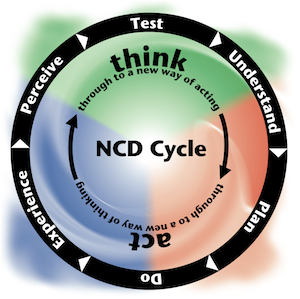Increasing Church Health
 The church has always been and is still only one generation from extinction! This sobering reality is hitting home to many churches across Australia and in many other places in the world, including the churches that I serve in the CRCA. In another 30 years these church buildings will close their doors, become restaurants, businesses, or mosques. Why? There simply won’t be anymore people!
The church has always been and is still only one generation from extinction! This sobering reality is hitting home to many churches across Australia and in many other places in the world, including the churches that I serve in the CRCA. In another 30 years these church buildings will close their doors, become restaurants, businesses, or mosques. Why? There simply won’t be anymore people!
But this has always been the reality! Once upon a time the Christian Church in Jerusalem was a thriving hub of activity and outreach. Travel today to Jerusalem and this church no longer exists. The same is true of the NT churches of Corinth, Ephesus, and Colossae. Jesus’ warning to the church Ephesus came to haunt them: “Yet I hold this against you: You have forsaken your first love. Remember the height from which you have fallen! Repent and do the things you did at first. If you do not repent, I will come to you and remove your lampstand from its place.” (Revelation 2:4-5) One day the light grew dim in Ephesus.
But does church extinction have to be the reality? Not really! Buildings might close, be torn down, and/or replaced, but if churches are healthy they will grow and multiply. This is why the letters to the NT churches in Revelation are so telling. Jesus calls churches to health, to wake up, to be overcomers, to repent and change their ways so that their light would shine brightly, to continue their hard work and perseverance in the faith (read Revelations 2-3). And this is also why as churches in the CRCA we are called to both established and new church development. The antidote to church extinction is growing healthy churches and for healthy churches to plant new churches.
The most recent CRCA Yearbook 2016/2017 reveals that when it comes to numerical growth, overall our churches have flatlined. In fact, from 2014-15 our churches saw an over membership decrease of 80 people, or -0.5%. Yet when I look at churches that have actively engaged church health initiatives using the NCD survey, there has been an overall increase of 222 people, which amounts to an average increase of 8.5%. If our whole denomination was growing at that rate, we would have seen more than 730 people added to our churches. This is not just about numbers, but this represents our children and grandchildren who are worshipping with us, new neighbours who have found a church home among us, lost men, women, and children who have been saved, who have responded to God’s call to repentance and faith! For our churches to see church growth we need to focus on church health!
Allow me to share some of the stories of CRCA churches using NCD as a tool to increase overall church health. One of our churches scored lowest in the area of Loving Relationships. Jesus taught us that “By this all men will know that you are my disciples, if you love one another." (John 13:35) Healthy churches show love – love for God and love for neighbour. The NCD survey pointed out that when new people came to church events, they were not approached openly and lovingly. They created a greeting team, people who are able to identify visitors, introduce them to a host, and get some details so they could do effective follow up. They really wanted to make connection with people new to our church. This church also formed a Strategic Planning Team. This team was asked to develop some ideas and plans how this church could achieve their vision and mission in their suburb. They asked questions such as, “Are there ministries that may be more effective in reaching out into the local community?” “Are there needs in the community that we could address?” The Strategic Planning Team’s mandate would focus around exploring ideas, activities, new or altered ministries, identifying how they might work in their church and indicate the likely outcome or impact on the community and the church.
Loving Relationships is an area many of our churches struggle with. In fact, if you look at the CRCA as a whole, loving relationships is now our minimum factor. (See Status Report) One of the best way to address a church’s minimum factor (what does not come naturally) is to use their maximum factor (what comes naturally). For example, in one of our churches you will find Effective Structures in place. But this church struggles with Loving Relationships. They realised that they needed to focus on hospitality, even as Scripture reminds us to “practice hospitality” (Hebrews 13:1). So they ran the 'Loving Your Church' course, Christianity Explored courses, a Connect Course, and other Pathway Bible Guide courses. They provide ongoing training for Life Group Leaders and implemented new structures in their church based on 5 Ms: Magnification, Membership, Maturity, Ministry and Mission. They have scheduled monthly prayer meetings. The whole focus is on growth in Christian maturity. This church used their strengths to address their weaker areas. As a result they have seen gradual growth in spiritual maturity, even though there is a long way to go. More visitors are coming to their weekly services and there is a slow and steady growth of people in Life Groups.
One church’s strength is another church’s weakness. One of our churches struggles with Effective Structures. Paul reminds us that healthy churches do everything in “a fitting and orderly way.” (1 Corinthians 14:40) There are structures in place that allow Christian ministry to be done effectively and in a way that gives glory to God and expands the impact of the gospel. This church recognized that their organisational structure was unclear to the members. So people with good management skills were added to their church council. Individuals were placed in charge of the various ministries of the church. At specific meetings of church council these people would give a short report and church council would discuss how these ministries were being done and how they could be done better. New goals would be set and specific actions put in place. The results in the church have been overwhelmingly positive. Everything in the church now runs much smoother than before. Any issues are being addressed. For example, this church felt that their music ministry needed a boost. They invited experienced worship leaders to visit them for a weekend. There were workshops with musicians and the sound technicians. This weekend drastically improved the level of their music and Sunday worship. A new Youth band was also formed that leads worship from time to time.
When a church completes an NCD survey, there is a lot of data given to the church. This data can be overwhelming, and some churches spend a long period of time simply ‘talking’ about their survey results rather than ‘doing’ something to address their minimum factors. One of our churches explored various ways address their minimum factor: Passionate Spirituality. Levels of commitment in the congregation were low. Enthusiasm about church and ministry had waned. So they invited input from key leaders in their church. One of the ideas that surfaced was to setup quarterly church leaders meeting. In these meetings they would share what each ministry leader was planning, talk about what is working well, encourage each other, share testimonies and spend some time in prayer for each other. The key to discovering whether or not this idea will work will simply be give these initiatives a go, do something, and evaluate the difference, if any, these initiatives are having on increasing Passionate Spirituality.
Doing an NCD survey in a church is no ‘magic’ solution to increasing the health of a local congregation. Some churches take the NCD survey, evaluate the results, and decide to ignore the outcomes. They just keep doing what they always have been doing. But in the often repeated quote, “Insanity is doing the same thing over and over again and expecting different results.” Whether or not this quote originated with Einstein or not, the truth of this quote is still pertinent. As I remind every church that does an NCD survey, the key to increased health is not the actual survey results, but the process of discussing the survey outcomes and implementing changes as a result. Do something! Monitor the results! Make changes! See the fruit! And your church will be well on the way to increased health, and increasing overall church health is an antidote to church extinction!
So is planting new churches! But that discussion is for another day.





 Jack De Vries was hired on by the Christian Reformed Churches of Australia and began his work as Ministry Training Coordinator in January 2008. In 2012 this role shifted to that of Ministry Development Coach.
Jack De Vries was hired on by the Christian Reformed Churches of Australia and began his work as Ministry Training Coordinator in January 2008. In 2012 this role shifted to that of Ministry Development Coach.
